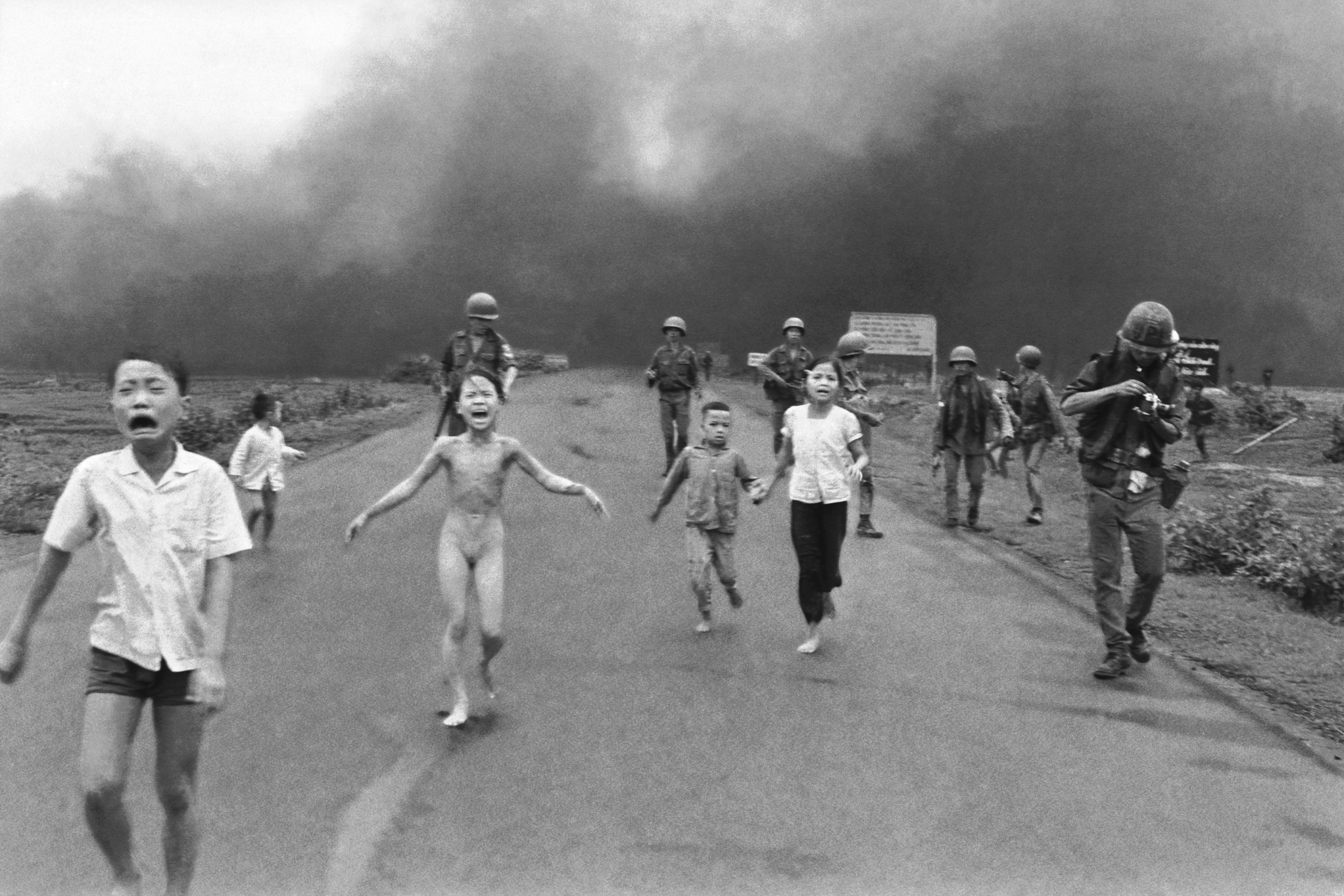“Innocent Civilians are Dying Every Day”: Napalm Girl and the Real Cost of War
Posted by Pete on Jun 8th 2019
Today in 1972, the New York Times published a harrowing photo of a girl fleeing a napalm strike in Vietnam. Far from an anomaly, this image captures the inner reality of all war – the maiming and killing of innocent civilians.
If you’re a Game of Thrones fan like me, you’ll still be feeling that emptiness brought on by the end of our beloved series a few weeks ago.
The medieval-esque fantasy ended [SPOILER ALERT!!!!!] with a characteristic bang: a city burned down by Daenerys Targaryen (Emilia Clarke) and her fire-breathing dragon.
But as the smoke settled on this firestorm – buildings destroyed, thousands of innocent civilians maimed or killed, and so on – we would be wrong to think such violence is limited to the world of fantasy.
The hard truth is that the carnage done by Daenerys and her dragon fits all-too-easily into the scenery of many modern wars in our real world.
Today, for example, is 47 years since the New York Times published the harrowing ‘Napalm Girl’ photo from the middle of the Vietnam War.
‘Napalm Girl’ and the Bombing of Trang Bang
The girl pictured running from her village, crying and naked after her clothes had been burned off by a napalm strike, was Phan Thi Kim Phúc.
She was only 9 years-old at the time when, on 7th June 1972, a US-armed South Vietnamese fighter jet hit her and her cousins as they fled for cover during combat in their village of Trang Bang.

Kim Phúc’s cousins were killed in the strike, while she suffered burns to 50% of her body. It took 14 months and 17 surgeries for her to recover.
A South Vietnamese photographer, Nick Ut, captured the now-infamous photo of Kim Phúc as she fled the scene of the bombing. It was published the next day – 8th June 1972 – in the New York Times.
The image shocked America and the world, turning up the pressure on the White House to end its barbaric intervention in Vietnam.
What’s more, the bigger reality was even worse – Kim Phúc’s ordeal and the bombing of her village was as far from an isolated incident as you could get.
The Desolation of Vietnam
Since the beginning of the war in 1964, America had been raining bombs with little accuracy across Vietnam.
In September 1965, one journalist reported on
“a woman who has both arms burned off by napalm and her eyelids so badly burned that she cannot close them. When it is time for her to sleep her family puts a blanket over her head. The woman had two of her children killed in the air strike that maimed her.”
He concluded:
“Few Americans appreciate what their nation is doing to South Vietnam with airpower. Innocent civilians are dying every day in South Vietnam.”
‘Napalm Girl’ was not an anomaly. The United States’ fight for ‘freedom’ in Southeast Asia was made up of hundreds of thousands of ‘Napalm Girls’ – innocent civilians killed, often with direct intent, by bombs, napalm, gunfire, and bayonets.
Game of Thrones in Real Life
At least two million Vietnamese civilians were butchered over the course of the conflict in Vietnam; innocents caught in a senseless Cold War crossfire.
And what’s true of Vietnam is true of almost all wars – innocent civilians are killed in huge numbers, even on the rare occasions where combatants have tried to avoid it.
From the notorious fascist bombing on Guernica depicted in Picasso's legendary painting, through to America’s wars in Vietnam and Iraq and Saudi cluster bombs still falling on Yemen today, the real story of war has nearly always been the untold story of massacred civilians, rather than the overtold tales of heroic generals.
That's why, as the legendary British Labour politician Tony Benn used to say, the Left has always stood for peace against those sabre-rattlers who threaten war to benefit their wealthy cronies - or worse yet - simply to make themselves feel like a big deal.
Despite what we see and read in the news, we live in a far more peaceful world today than when America went to Vietnam. Perhaps that's why war still shocks and horrifies us all the more.
Throughout history when the brutality of war has spilled off the pages of fantasy and into our real world, it has always faced a formidable peace movement. And, until war is overcome, it always will.
